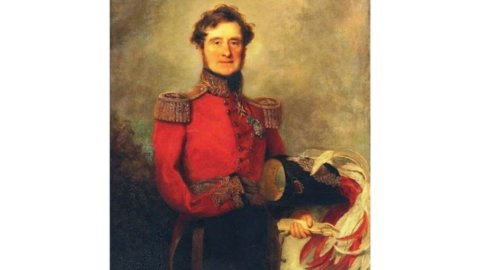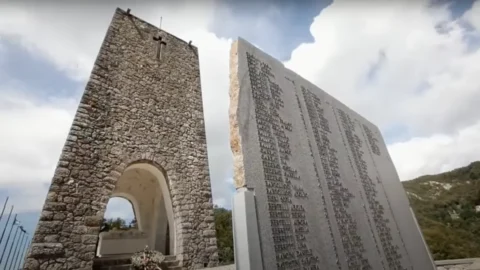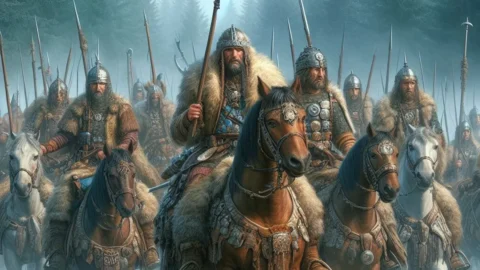These two distinguished historical aristocratic families are linked through their prominence in early 19th century British history. Comprising a total of over 500 lots, this sale presents a cornucopia of rare and unique opportunities which will excite connoisseurs, institutions and enthusiasts around the world. The sale is expected to realise a combined total in the region of £1.5 million.
The Raglan Collection: Wellington, Waterloo & The Crimea is a private collection from Cefntilla Court, Monmouthshire, the ancestral home of the Barons Raglan since 1858. It includes important historical medals, arms and armour, militaria, pictures, furniture, silver, books, Indian weapons and works of art, as well as a selection of enthnographic art. The collection is being sold by order of the Executors of Fitzroy John Somerset, 5 th Baron Raglan (great-great-grandson of the 1st Baron Raglan). The collection comprises over 300 lots and is expected to realise in excess of £750,000.
Highlights include:
Commissioned into the army at the age of fifteen, Lord FitzRoy Somerset became the Duke of Wellington’s Aide-de-camp in 1808, at the age of twenty, as Captain.
Somerset proved himself in battle, bearing the dispatches after Talavera (1809) and receiving a wound at Busaco (1810). He played a distinguished role in the bloody storming of Badajoz in 1812 and fought at the battles of Salamanca (1812), Vitoria (1813) and Toulouse (1814), after which he was made KCB. He was awarded the
Peninsular Gold Medal (with clasps for Badajoz and Salamanca) illustrated left and the Peninsular Gold Cross (with five clasps) illustrated far right. These latter medals were instituted by the Prince Regent on behalf of his ailing father, George III, to reward senior officers for their service in the Peninsula. For his first battle the recipient would be awarded a gold medal, for his second and third two clasps, and thereafter the exquisite gold cross (with clasps). In total, only 165 crosses and clasps were ever awarded.
The above medals are included in the highly important and exceptionally rare group of honorary awards and medals awarded to Field Marshal Lord Raglan (estimate: £250,000-350,000). The field marshal’s baton that Raglan was awarded after his victory at Inkerman in the Crimea (a rank that had been created for Raglan’s mentor Wellington after his success at Vitoria) is also included in the lot illustrated right. Designed by the Prince Regent, and presented by Queen Victoria, the deep red velvet baton is decorated with small gold lions, and the base is engraved: ‘From Her Majesty Alexandrina Victoria Queen of the United Kingdom of Great Britain and Ireland to Field Marshal The Lord Raglan G.C.B. 1855’, with maker’s mark WN for William Neal, hallmarks for 18 carat gold, London and 1854; it is surmounted by a figure of St. George slaying the dragon. Somerset’s Waterloo Medal, issued in 1816-17 and the first award given by the British government to all soldiers present at a battle, as well as his Crimea Medal with four clasps are also included in the lot. The lot comprises a total of twelve awards and medals, and is accompanied by a copy of a letter signed by Frederick, Duke of York as commander-in-chief to Lord FitzRoy Somerset, Horse Guards, 21 September 1813.
As Wellington’s right-hand-man for almost forty years, the collection includes a number of lots related to the first Duke of Wellington, including a mahogany armchair by Holland and Sons, used by Wellington in his office at Horse Guards (estimate: £4,000-6,000). Somerset married Lady Emily Wellesley-Pole, the daughter of Wellington’s
brother William Wellesley-Pole later third Earl of Mornington, and Wellington’s favourite
iece. Wellington gave many personal treasures to Emily, including a diamond-set gold bracelet containing a lock of his hair (estimate: £1,500-2,000) and a heavy Indian gold ring which he had purportedly taken from Tipu Sultan, after the Battle of Seringapatam in 1799 (estimate: £10,000-15,000t).
The collection includes notable Crimean artifacts, such as the bridle that was reputedly worn by Captain Nolan’s horse when its owner was killed by a Russian shell – the first casualty on the occasion of the infamous Charge of the Light
Brigade (estimate: £3,000-5,000). Also featuring is the elm table that was used by Queen Victoria to distribute the first Crimea Medals in London in May 1855 (estimate: £2,000-3,000); a Russian bugle that was seized mid-sound
by a British drummer boy when the 77thRegiment stormed a Russian trench during the Siege of Sebastopol (estimate: £1,000-1,500); and two bronze Russian cannon, dated 1821 and 1829, that were captured when the Allies finally took
Sebastopol in September 1855 (estimate: £20,000-40,000 each illustrated above), a victorious conclusion which Field Marshal Lord Raglan did not live to see.





